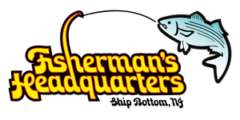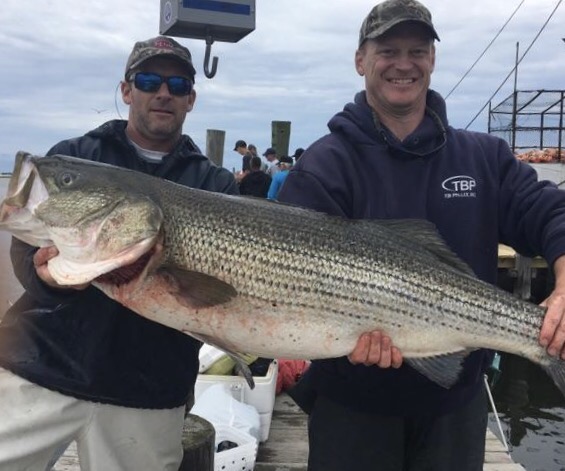While at the ICAST 2024 show I saw cameras and product reviews going on in every which direction. Each time I passed the Daiwa booth I saw angler after angler high sticking on their demo machine. In disbelief, I forced myself to walk by what the industry considers the best of the best professionals. On the last day of the show, I had a free window at their booth since our Daiwa rep had to leave early. After reviewing and tinkering with all of their great products I took some time to talk to Daiwa engineer Takuya Oda in from Japan about rods, reels, drag and technique. After our talk he said “shoot video please”! This is for the high stickers out there!
Proper technique and form for landing big fish on light tackle is not all about brute strength. Fish more efficiently and effectively with proper technique for MAX pressure with less effort! It’s important for anglers to learn and understand how to maintain control, increase endurance all while protecting expensive fishing gear from damage.
In the video Daiwa’s super accurate 1/10th pound scale with on screen display really allowed for some interesting looks. I played with the unit for some time. I really had my head spinning when I tried to put the same effort in at different angles. With one approach it was almost 10# and then same effort high sticking was 3.5#. Wild! Not only does the high sticking angle not put pressure on the fish it puts the rod in jeopardy every time. The key that most don’t get is utilizing the power stroke, mid and back section of the rod.
With regards to slow pitch fishing, the rods are soft and parabolic so the angler must use the drag and gearing of the reel as well as only a small portion of the rod’s butt section as the lever since the rest of the rod is soft and folds over for working the jig. As shown in the video at about the 50 second mark there is a good amount of pressure put on the fish with the under the arm approach.
Remember, I could not crank the reel and I could not (was not allowed to) adjust the drag or thumb the spool. So I could have put significantly more pressure using any of those three, but that wasn’t in the cards for this situation. It also was not what Daiwa was trying to convey with their display.
As far as proper technique, I would say whatever is the most efficient approach is the right approach. To each their own. What I have found over the years of fishing and not being a muscle man… technique is everything . Brute strength hardly ever wins. From what I see on the water, in photos and videos TOO MANY times anglers are mistakenly working against themselves and the tackle rather then focusing their efforts on the fish.
While the rod and reel on the display (machine/gauge) was a slow pitch style outfit, what the engineer and I wanted to share is how high sticking is a Major No No! It risks breaking the rod and also doesn’t help the angler. It actually hurts by putting less pressure. That is because the rod tip will never have more power than the mid and butt section. We also wanted to share that there is a proper way to rest during a long battle, while still maintaining maximum pressure on the fish but little exertion from the angler.
One other point I tried to make was how the angle and positioning of the angler changes the pressure put on the fish while not changing the effort exerted by the angler.
I really wanted to link up a stand up rod, popping rod, classic 7′ inshore rod and a surf rod to demonstrate proper technique with proof from the gauge/display. But it too was not in the cards.
All of the above is information on fighting fish without belt and harness. It would be a disservice to leave out some info on stand up fishing. So I dove back into my fishing catalog archives to share some great info from the 90’s. Here is stand up fishing info from Dennis Braid founder and innovator at Braid Fishing Products. Think Braid Stand Up Fishing Belts! Dennis first made a rod belt in 1983 and over time, took it to another level. He was one of the best stand up anglers and not a monster. Actually Dennis was a small guy but used technique to get the job done.
Stand Up Fishing
Aboard almost all sportfishing boats, you’ll find Braid fishing belts and harnesses or another brand of product utilizing the innovation from Dennis Braid. Nearly everyone utilizes the the fish-fighting tools and accessories that have made the stand-up big game angling possible. Here’s our selection of fish fighting belts, butts and harnesses.
Back in the day skippers and fishermen together learned was that parabolic glass marlin rods and primitive harnesses of the time were nearly ineffective. Too much brute strength was required to grapple with the giant yellowfin, limiting the game to body builders or salty masochists.
Demands spurred innovation and pioneers first adjusted to shorter rod lengths. Then reels with powerful lower gear ratios and two speed gearing. Certainly huge advancement in spectra line technology, and innovative bucket harnesses.
Each element, in progression, meant the fishermen could actually procure a mechanical advantage. The new shorter rods could gain needed leverage on huge fish, especially when they were ‘straight down’ below the fisherman. The lowering of gear ratios was only one step. The movement to two speed reels provided either speed or power on demand as needed, giving even more control to the anglers regardless of physical stature.
By full utilization of the angler’s body weight, spreading out of opposing forces at the pivot point, and using all various elements of rod, reel and manpower to the fullest mechanical advantage, is the true science of fishing.
Braid’s Pro Tip: If you fish 30-pound tackle or heavier,always use a gimbal mounted rod. With the rod butt inserted in the pin of your rod belt, all your efforts are put toward managing your fish, not ‘white knuckling’ the foregrip as the rod twists and turns in your hand. And you don’t need new rods, just replace the butt caps with gimbals.
Fish Fighting Technique
You can break stand-up fighting techniques into two types: simply hip pivot or knee pivot. Hip pivot methods are associated with 50# class gear and lighter (belts and kidney harnesses), while the knee pivot method is related to the 80-130# class tackle (with bucket harness and butt plate gear). Of course, you’ll use the hip pivot at times while in your bucket harness, but only when a huge fish is not exerting its full force.
Dennis prefers this version of the hip pivot method. Stand with your feet a reasonable distance apart, knees bent. You want the weight of your body over your heels, but not so much you are truly flat-footed. You’ll want your weight distributed just enough so you can move left or right or back on the balls of your feet. In other words, you must have balance. With your left hand comfortable and high on the rod’s foregrip and your arm fully extended, keep your arm fully extended, keep your back reasonably straight. When you “pull” on the fish, you do so by pivoting at the hip. When you lean back, turn your body slightly to the left, the force is lower on your body, not up in your arms and back. The key to maximize your power is to grasp the rod as high as possible on the foregrip. In doing so, you are as close to a direct line pull as is possible with rod and reel.
The same effect can be maintained with a kidney belt and harness, as long as the rod is adjusted to approximately a 45 degree angle to the water This gives you enough play to lean forward, draw back, short stroke or lengthen your stroke as needed. Of course, when you’re connected to a harness, you won’t need your left hand to do any pulling on the rod. It rests on the reel and distributes the line on the spool while cranking.
Once you settle down on a truly giant fish with a Braid Belt and bucket harness (Power Play or Brute Busters), you’ll be able to exert maximum force on the fish and still be there at the end of the fight to tell about it. With the fish on the run, all you need to do is get into a semi sitting position, leaning back against the force of the fish. This way you counterbalance the pull and don’t over-tax your back, arms and legs. With your feet about 24 to 30 inches apart, knees bent, with one foot slightly forward or behind for balance, you can raise the rod by squatting. As you elevate or begin to stand, you take quick half to full cranks on the reel to gain whatever line you can. Repeat the squatting-to-lift, standing-to-reel pattern over and over. The bucket method allows you to put a ‘finishing’ amount of pressure on the fish close to the boat for tagging or gaffing.
It takes practice to perfect the method and it is vitally important to keep your knees braced firmly against the gunnel of the boat. Its crucial to have rod harness properly adjusted. Set up with your knees slightly bent. You want to have the rod at about a 35 to 40 degree angle so when you lean back, your rod raises and gives you lifting power. A rod adjusted too high does just the opposite. The key is to exert maximum force, with a minimum of effort… it’s what stand up fishing with Braid belts and harnesses are all about.




 609-494-5739
609-494-5739
